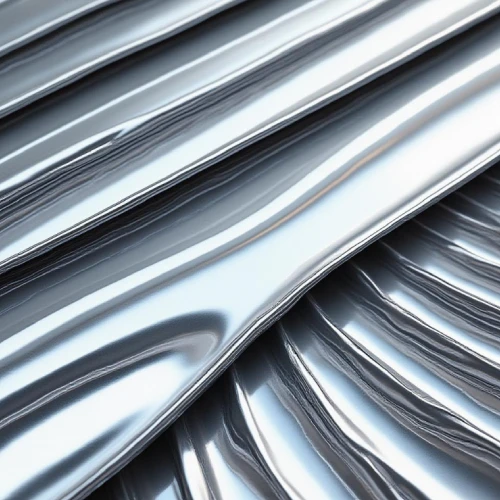Stainless steel is renowned for its durability and resistance to rust, but it’s not invincible. One of the most challenging issues it faces is intergranular corrosion—a hidden threat that can weaken the metal from within. Imagine a sturdy bridge suddenly developing cracks due to corrosion you can’t even see from the outside. That’s the danger of intergranular corrosion. In this article, we’ll dive into what causes it, why it’s a problem, and most importantly, how to solve it. Whether you’re an engineer, a fabricator, or just curious about materials, understanding these concepts can save time, money, and even lives.

What is Intergranular Corrosion?
At first glance, stainless steel looks smooth and uniform. But under a microscope, it’s made up of tiny crystals called grains, with boundaries between them known as grain boundaries. Intergranular corrosion attacks these grain boundaries, eating away at them while leaving the grains themselves relatively intact. It’s like termites attacking the wooden frame of a house—from the outside, everything might seem fine, but the internal structure is slowly being destroyed.
This type of corrosion doesn’t just make the steel look bad; it significantly reduces its strength. A stainless steel component affected by intergranular corrosion can suddenly crack or break under stress, leading to catastrophic failures in critical applications like pipelines, chemical reactors, or medical implants.
The Root Cause: The Chromium Carbide Problem
The key culprit behind intergranular corrosion is a chemical reaction involving chromium and carbon, two elements in stainless steel. Chromium is what gives stainless steel its corrosion resistance—it forms a thin, protective oxide layer on the surface. But when stainless steel is heated in a specific temperature range (usually between 450°C and 850°C, known as the sensitization temperature range), carbon atoms in the steel start to react with chromium atoms near the grain boundaries.
They combine to form chromium carbide (Cr₂₃C₆), a hard compound that precipitates out at the grain boundaries. The problem? This process uses up a lot of chromium from the surrounding area. When the chromium content near the grain boundaries drops below 10.5% (the minimum needed for the protective oxide layer), the steel loses its corrosion resistance at these critical points. Suddenly, the grain boundaries become vulnerable to attack from moisture, chemicals, or other corrosive substances.
Real-World Examples of the Damage
In Chemical Plants
Stainless steel pipelines in chemical plants often carry aggressive acids and solvents. If these pipes have been sensitized due to improper welding or heat treatment, intergranular corrosion can occur. Over time, the corroded grain boundaries weaken the pipes, leading to leaks. These leaks not only waste valuable chemicals but can also pose serious safety risks, such as chemical spills or explosions.
In Welding Projects
Welding is a common process in stainless steel fabrication. But if the welding process isn’t carefully controlled, the heat can push the metal into the sensitization temperature range. For example, a poorly welded stainless steel handrail in a building might seem fine at first. However, after a few years of exposure to rain and humidity, intergranular corrosion can set in at the welds, causing the handrail to break unexpectedly.
Effective Solutions to Combat Intergranular Corrosion
Choose the Right Stainless Steel Grade
Low-Carbon Grades: Opt for grades like 304L or 316L, where the “L” stands for “low carbon.” With a carbon content of ≤0.03%, these grades have much less carbon available to form chromium carbide, reducing the risk of sensitization. They’re ideal for applications where welding is involved, such as in food processing equipment or medical devices.
Stabilized Grades: Grades like 321 or 347 contain stabilizing elements like titanium (Ti) or niobium (Nb). These elements react with carbon before it can combine with chromium, forming stable carbides that don’t deplete chromium near the grain boundaries. They’re commonly used in high-temperature applications, like furnace parts and heat exchangers.
Control the Heat Treatment Process
Avoid the Sensitization Range: During manufacturing or welding, try to keep the stainless steel out of the 450°C - 850°C temperature range. For example, use rapid cooling methods after welding to quickly move the metal through this dangerous zone.
Solution Annealing: Heat the stainless steel to a high temperature (usually around 1050°C - 1100°C), then cool it rapidly. This process dissolves any chromium carbide that has formed and redistributes the chromium evenly throughout the metal, restoring its corrosion resistance.
Surface Treatment and Protection
Passivation: After fabrication or welding, subject the stainless steel to a passivation process. This involves treating the surface with a mild acid (like nitric acid) to remove any free iron or contaminants and enhance the formation of the protective oxide layer.
Coatings: Apply protective coatings, such as epoxy or polyurethane, to the stainless steel surface. These coatings act as an extra barrier, preventing corrosive substances from reaching the grain boundaries.
The Future of Combating Intergranular Corrosion
Researchers are constantly looking for new ways to tackle this issue. One area of focus is developing nano-scale additives that can enhance the stability of the chromium oxide layer. Another promising direction is creating self-healing materials that can automatically repair damaged grain boundaries when exposed to certain conditions. These advancements could revolutionize how we use stainless steel, making it even more reliable in challenging environments.
In conclusion, intergranular corrosion might be a hidden enemy of stainless steel, but with the right knowledge and strategies, it’s a battle we can win. By choosing the right grades, controlling heat treatment, and applying protective measures, we can ensure that stainless steel lives up to its reputation as a durable and corrosion-resistant material. Whether it’s building the next skyscraper or crafting a simple kitchen utensil, understanding these solutions is key to making the most of this amazing metal.

